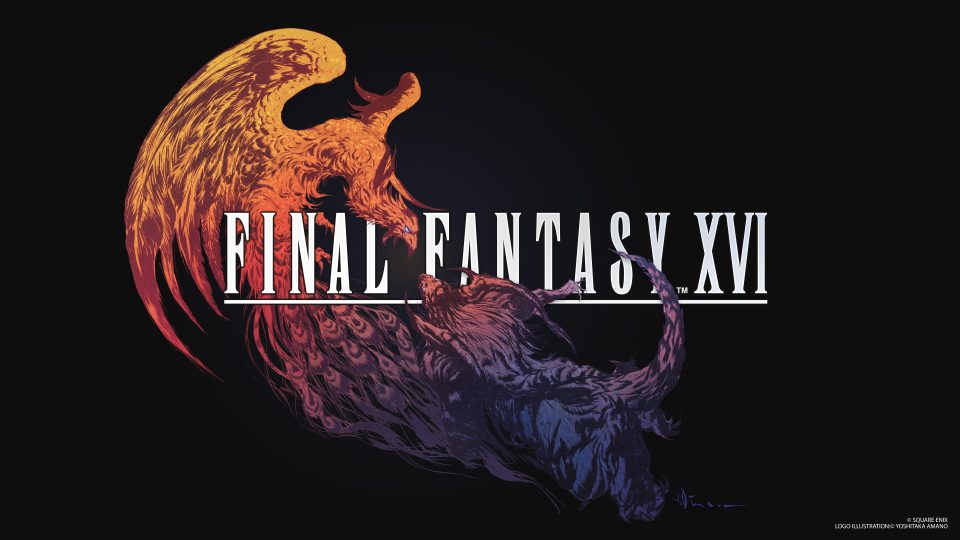After almost a year as a PlayStation exclusive, Final Fantasy 16 finally makes its landmark arrival on Xbox. Unlike my own playthrough, where I purchased the base game and DLCs separately, Xbox players now get everything bundled in the complete edition. That means Clive’s full journey, plus Echoes of the Fallen and The Rising Tide, are waiting in one package. For those who have waited, this is the most complete entry point yet. And after spending nearly 60 hours in Valisthea, I can confidently say this is one of the boldest, most unforgettable Final Fantasy experiences in years.
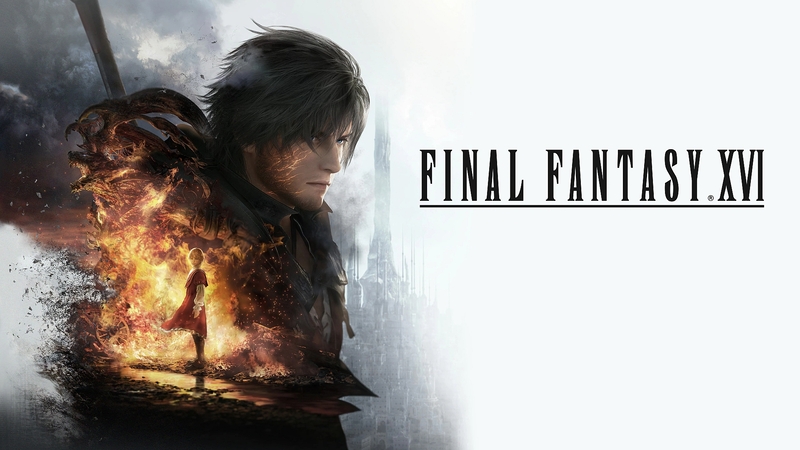
Developer & Publisher // Square Enix
Platforms // PlayStation 5, Xbox Series X and Series S, Microsoft Windows, GeForce Now
MSRP & Release Date // $49.99 (Base), $69.99 (Complete), June 2025 (On Xbox)
Reviewed On // Xbox Series X
Storytelling at Cinematic Scale
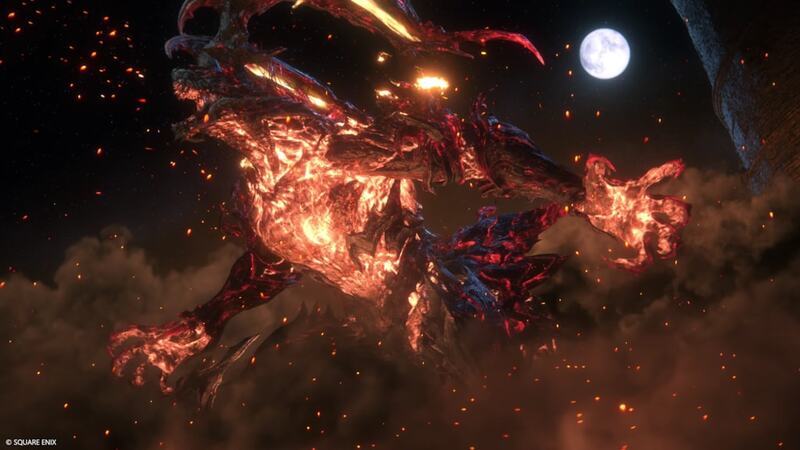
One of the biggest reasons to play Final Fantasy 16 is its story. This is a dark, political fantasy filled with betrayal, tragedy, and hope. Clive Rosfield’s arc from broken survivor to Ifrit’s Dominant is told with sweeping scope and some of the strongest performances in the series. I particularly enjoyed Clive’s character development across the journey.
He begins as a man weighed down by grief and revenge. Without spoiling anything, he thought he had killed someone at the beginning of the game. But over dozens of hours, he grows into a true leader who inspires loyalty and hope. His evolution felt natural and earned, and by the end of the game, I was fully invested in his struggles and triumphs.
Ben Starr’s performance anchors this arc with nuance, while Masayoshi Soken’s music and sound elevate the drama into something unforgettable. Together, they ensure that Clive’s story hits as one of the most memorable in the Final Fantasy franchise. But unfortunately, the game leans heavily on long cutscenes. They are beautifully directed and deliver the kind of substance you’d expect from a movie or big-time TV, but at times they can feel indulgent. In fact, I had my Xbox screensaver kick on more than once during extended sequences. Which took me out of the experience more than once. It’s a small but telling detail. These moments are so long that your console thinks you’ve set the controller down. Depending on your patience for cinematic pacing, this will either be a strength or a frustration.
Despite that, the story pays off in its later acts, with emotional peaks that feel earned. And while it delivers resolution to Clive’s journey, it also leaves you on a cliffhanger that hints at more to come, making what you see after the credits linger long after the credits roll.
A Cast Brought to Life – Models, Voices, and Lore
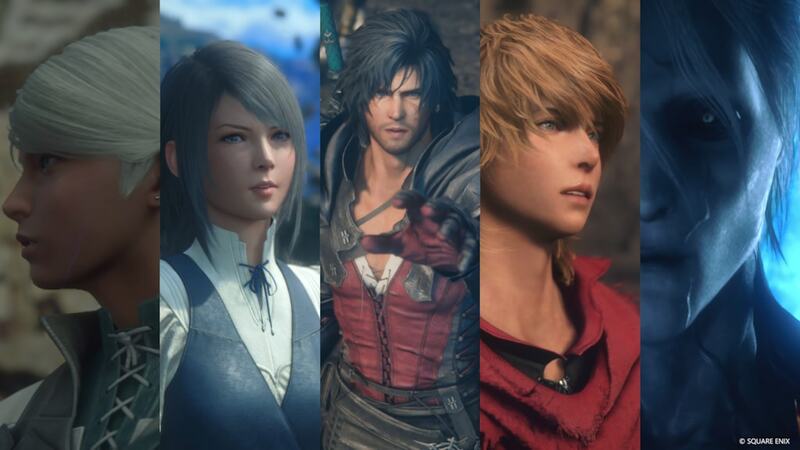
The character model designs are some of the most impressive in the franchise. Every companion, rival, and Dominant feels distinct, with intricate armor, subtle facial animations, and cinematic-level detail that makes even side characters memorable. Clive and Cid, in particular, were my favorites. They showcase just how much care went into the design work. Clive’s model reflects his transformation throughout the story. From the grief-stricken youth early on to the hardened leader he eventually becomes. The detail in his expressions and the weight in his eyes make his journey feel believable.
Cid, on the other hand, is brought to life through rugged features and a design that instantly shows charisma and authority, matching Ralph Ineson’s commanding performance perfectly. Both stand among the most realistic and compelling character models the series has ever produced.
Voice acting is equally remarkable, and for me, it’s one of the most important aspects when I play or review a game. Strong performances can make or break immersion, and here, they elevate the entire experience. Ben Starr delivers a career-defining performance as “Clive,” capturing both fiery vengeance and quiet vulnerability. Meanwhile, Ralph Ineson as “Cid” brings substance, warmth, and a commanding presence that lingers long after his scenes. The supporting cast shines as well, making this one of the best-acted Final Fantasy titles to date.
One feature I personally loved was the “Active Time Lore” system. Being able to pause a cutscene and instantly pull up context on characters, factions, and world history was invaluable. It not only helped track Valisthea’s complex politics but also made the world feel richer. I genuinely hope Square Enix carries some iteration of this feature into future Final Fantasy titles.
A Different Kind of Final Fantasy Combat
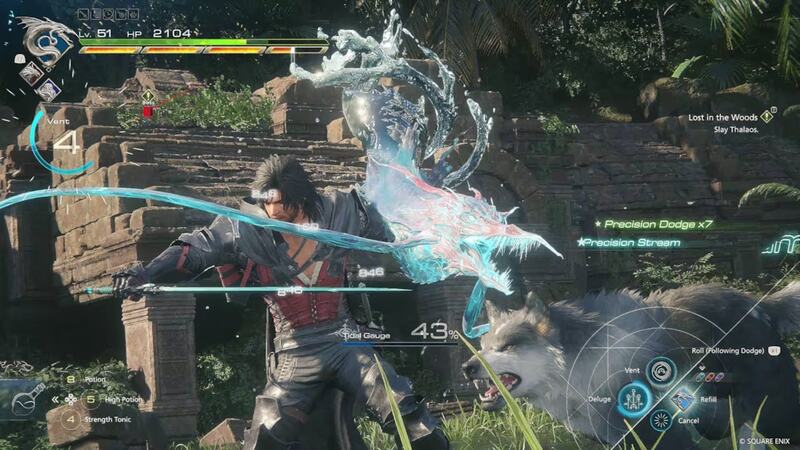
Combat is a dramatic departure from Final Fantasy tradition. Instead of turn-based tactics, you’re thrown into real-time battles that resemble Devil May Cry more than something like Final Fantasy X. The Eikon abilities are the stars here. Swapping between Garuda’s aerial control, Titan’s countershields, Bahamut’s massive beams, Odin’s stance-breaking, and eventually Leviathan’s long-range Serpent’s Cry makes every battle feel like a choreographed spectacle. Even though I mostly stuck with Bahamut, Ramuh, and Phoenix abilities, they all have their uses. Boss fights, especially Eikon vs. Eikon clashes, are some of the most visually stunning encounters in the series’ history.
That said, the game doesn’t lean heavily on strategy or party management. The gear and equipment system was pretty basic. Past entries challenged you to balance buffs, elemental affinities, and multiple characters. Here, you’re locked into Clive, and most victories come from timing, cooldown management, and combos. The game is exhilarating moment to moment, but if you crave the tactical layers of earlier titles, you may find the depth lacking.
The build system is refreshingly open. Rather than forcing players into rigid paths, the game lets you mix and match Eikon abilities and upgrades freely. I found it worked best to simply use the abilities and playstyle I enjoyed most, and the game rewarded me for doing so. That freedom gave combat my own personal flair that kept it engaging across dozens of hours. Still, the action focus sometimes made it feel like I wasn’t playing a Final Fantasy game. The RPG roots are there in gear, abilities, and side quests, but the series’ traditional DNA has been reshaped into pure action spectacle.
The DLC Expands the World
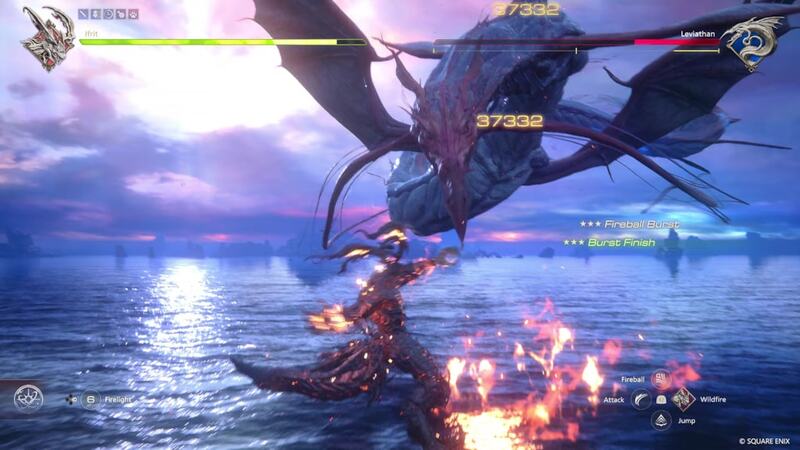
Echoes of the Fallen – Omega Awaits
This DLC serves as a late-game side story, sending Clive into the Sagespire Tower. It’s a raid-like gauntlet filled with challenging encounters. It’s combat-first, capped by the cool Omega boss fight, and it gives fans of action gameplay exactly what they wanted: one more gauntlet to push their builds.
The Rising Tide – Leviathan Returns
The larger expansion of the two, The Rising Tide, introduces a new region in Mysidia. Also, it resurrects Leviathan, the lost Eikon of Water. This adds both meaningful story content and a fantastic new ability kit that emphasizes ranged combat. The highlight is, of course, the showdown with Leviathan, which stands among the game’s most memorable battles.
It also introduced welcome quality-of-life features like button remapping, clearer UI, and streamlined quest hand-ins. These features make the whole game smoother to navigate. Endgame players also unlock Kairos Gate, a 20-stage score-attack ladder with leaderboards that extends the game’s replayability for those who master its combat systems. While I didn’t mess a lot with Karios Gate, I felt this was the better of the two DLC overall.
Smooth but Not Flawless
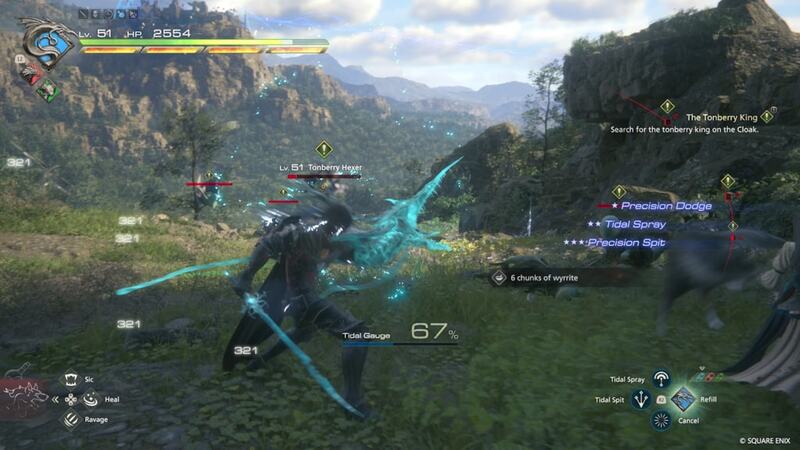
On Xbox Series X, Final Fantasy 16 offers Graphics Mode and Performance Mode. Performance Mode targets 60 fps but often drops resolution to around 720p (in my experience), while Graphics Mode looks sharper but doesn’t always feel as smooth. For the most part, I found Performance Mode to be the better option. The frame stability makes parries and combos feel responsive. But in my own playthrough, there were times when spamming abilities during hectic battles caused frame drops.
These moments weren’t frequent, but when they happened, the lag stood out and reminded me that the port isn’t flawless. Overall, the tradeoff favors gameplay feel. The Xbox Series X version may not be the sharpest looking, but it is smooth enough to make the action-heavy design shine. I do need to mention the fact that it is “Xbox Play Anywhere,” so you can buy it once on Xbox or PC and play on the other platforms, and vice versa.
A World That Demands Attention
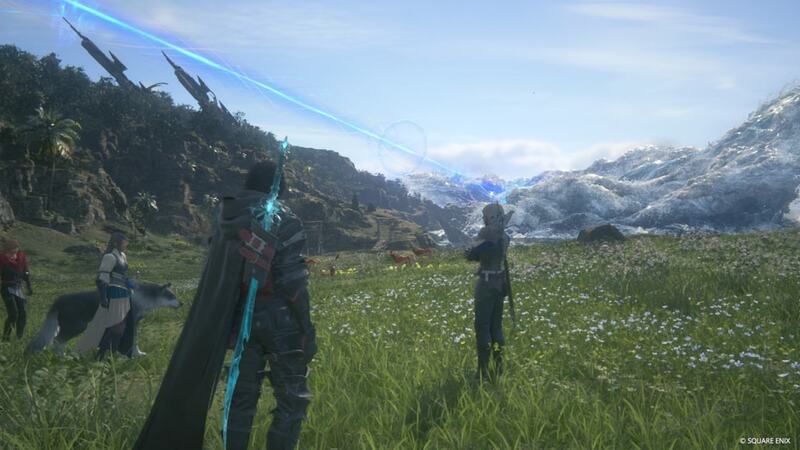
Even with its resolution compromises, Valisthea is a world that demands your attention. From sprawling citadels to elemental wastelands, the art direction carries the game visually. The Eikon battles are still, the quote on quote, “turn up the volume” moments that define this generation. A game’s aesthetic, world design, and music are especially important to me when I play or review a game, and Final Fantasy 16 delivered on all three. Soken’s soundtrack is a triumph, blending sweeping orchestral movements with haunting vocals, and each Eikon theme feels perfectly tailored to the fight at hand.
The careful detail in Valisthea’s regions, from windswept plains to the dense fortresses, made exploration feel consistently rewarding. I spent 57 hours and 36 minutes finishing every available hunt and side quest I could. While some quests fall into “filler” territory, many flesh out the political landscape, companions, and ordinary lives of Valisthea’s people. The Hunts in particular gave the game a rewarding endgame loop, testing builds against powerful monsters in challenging encounters. For players who enjoy wringing every last drop out of an RPG, there’s more than enough here to justify the hours.
Value and Accessibility
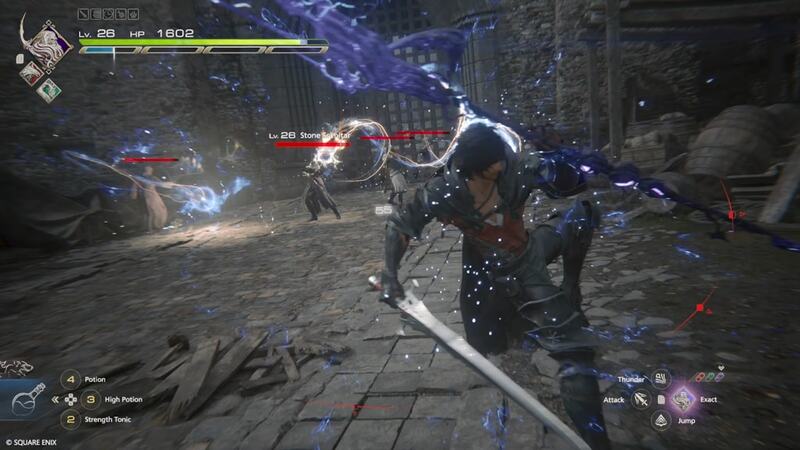
Having played the DLCs, I can say both are absolutely worth it. For Xbox players, the fact that everything is bundled at launch makes this a complete package without the need to piece-meal purchase. Accessibility is another area where Final Fantasy 16 shines in some aspects. The game introduces “Timely Equipment.” Timely Equipment is a set of optional accessories that simplify combat for players who need assistance. These items can automate dodging, simplify combos, or slow down incoming attacks, letting newcomers or those with accessibility needs fully enjoy the story without being locked out by difficulty spikes.
Combined with the quality-of-life updates from The Rising Tide DLC, like button remapping, cleaner UI, and streamlined quest hand-ins, the Xbox release is the most player-friendly version yet. I do believe the equipment was more to make the game approachable to new players, but it turns out to be useful for accessibility. These accessibility options allow you to change the subtitle size, background opacity, and use speaker tags. There was also an option to activate wave-forms, which enables in-game sounds and music to be represented as colored waves. I didn’t use these options, but the more options available for people, the better.
The Last Word on Clive’s Journey
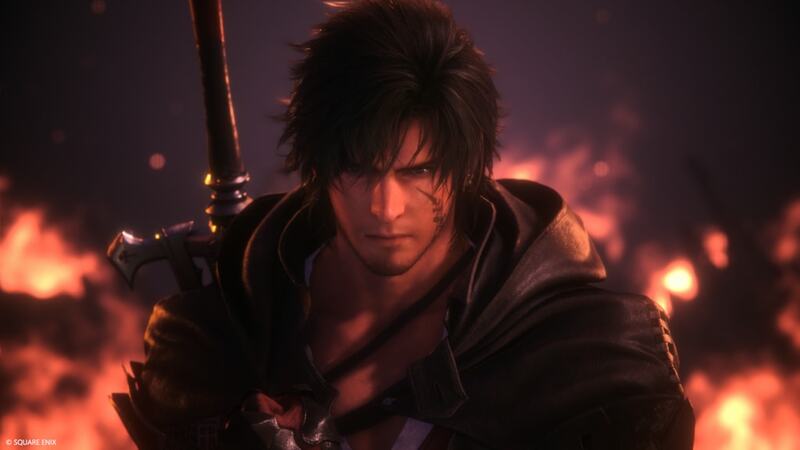
Final Fantasy 16 is one of the boldest entries in the franchise. Its story is unforgettable, its characters beautifully realized, and its DLC meaningful. Clive’s development is a highlight, showcasing one of the most satisfying character arcs in the series. The combat is thrilling if unconventional, the world is richly fleshed out, and the Active Time Lore system is a brilliant innovation I hope returns in future entries. On Xbox Series X, the performance is smoother than expected—though not flawless—and the bundled content ensures players get the richest version yet. The long cutscenes tested my patience, and the action focus sometimes made me question its Final Fantasy DNA. With that said, Clive Rosfield’s journey is a powerful, emotional epic that deserves to be experienced by everyone.
Final Score: 8.7/10
Note – The Base Version and DLCs were self-purchased and played for this review.
Pros:
- Mature, character-driven story with unforgettable performances
- Clive’s character development is one of the series’ best arcs
- Character models and voice acting are standout highlights
- Voice acting elevates the game to another level
- Game excels with aesthetics, world design, and music
- Spectacular real-time combat and jaw-dropping Eikon battles
- Active Time Lore is an excellent addition
- DLC adds both a meaningful story (Rising Tide) and a great challenge (Echoes)
- Kairos Gate gives long-term replayability
- Excellent soundtrack and strong English voice cast
- Timely Equipment makes the game more accessible for all players
- Dozens of hours of rewarding hunts and side quests (57h+ for completionists)
Cons:
- Long cutscenes can interrupt pacing (and even trigger the Xbox screensaver)
- Action-heavy combat may not feel like “Final Fantasy” to longtime fans
- Lacks strategic depth
- Performance mode dips to low resolutions
- Some side quests remain filler

